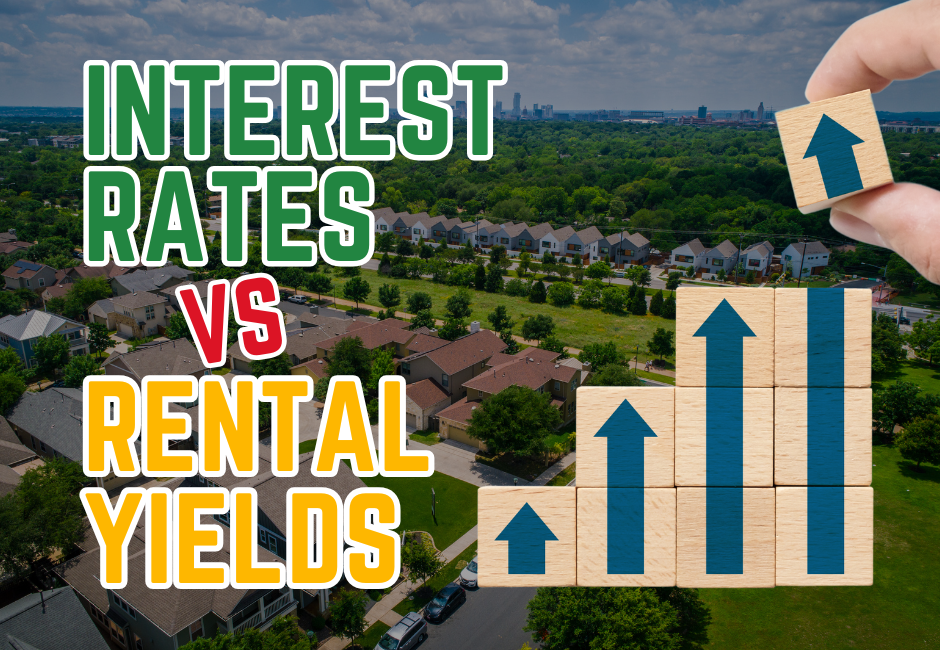
The Relationship Between Interest Rates and Rental Yield: What Investors Need to Know
Introduction
For property investors, few forces are as influential as interest rates and rental yields. Together, they shape cash flow, borrowing power, and the long-term success of an investment portfolio. While interest rate changes directly affect mortgage repayments, they also indirectly influence rental market dynamics and tenant demand. Understanding how these two factors interact is critical for investors looking to maximise returns, manage risk, and maintain financial resilience.
When interest rates rise, borrowing costs increase, reducing affordability for many would-be buyers and often driving up rental demand. Conversely, when rates fall, borrowing becomes more affordable, and more renters transition into homeownership, which can soften rental demand.
This article explores how interest rate movements affect rental yields, provides data-driven insights across key Australian markets, and outlines actionable strategies to help investors safeguard and grow their cash flow—even in rising rate environments.
How Interest Rate Hikes Affect Rental Demand and Yield
1. Rising Interest Rates Reduce Borrowing Power and Homeownership
As rates increase, mortgage affordability declines. Many prospective buyers are priced out of the market and must remain renters longer, boosting demand for rental properties.
Example:
An individual qualifying for a $600,000 mortgage at a 3% interest rate may only qualify for around $480,000 when rates rise to 6%. This shift pushes more people into the rental market, creating upward pressure on rents.
2. Investors Face Higher Mortgage Costs
Rising rates increase mortgage servicing costs, which can sharply erode an investor’s cash flow.
Example on a $600,000 loan over 30 years:
- At 3% → $2,530/month
- At 6% → $3,597/month
- At 7% → $3,992/month
A jump from 3% to 6% adds over $1,000 per month—more than $12,800 annually. For investors reliant on rental income, this significantly tightens financial margins.
3. Rent Prices Often Increase as Homeownership Becomes Less Accessible
As buying becomes harder, rental demand typically rises, giving landlords an opportunity to increase rents and, in turn, improve rental yields. However, the extent of rental growth depends on:
- Local vacancy rates – Tighter markets enable higher rent increases.
- Wage growth and affordability – Rent hikes must align with local incomes to remain sustainable.
Data Snapshot: Rental Yields vs. Mortgage Costs Across Australian Cities
| City | Median House Price (AUD) | Average Rental Yield (%) | Mortgage Cost at 6% (AUD/month) | Average Rent (AUD/month) | Net Cash Flow Impact (AUD) |
| Sydney | $1,300,000 | 3.2% | $6,500 | $4,200 | -$2,300 |
| Melbourne | $900,000 | 3.5% | $4,500 | $3,150 | -$1,350 |
| Brisbane | $750,000 | 4.8% | $3,750 | $3,000 | -$750 |
| Perth | $650,000 | 5.2% | $3,250 | $2,900 | -$350 |
| Adelaide | $700,000 | 4.7% | $3,500 | $3,100 | -$400 |
Key takeaways:
- Sydney and Melbourne have the lowest rental yields, making cash flow management more challenging.
- Brisbane, Perth, and Adelaide offer stronger yields, better cushioning investors from rising mortgage costs.
- High-priced markets may require creative strategies, such as dual-income setups or targeted rent increases, to offset cash flow pressure.
Strategies to Maximise Cash Flow Despite Rising Interest Rates
1. Target High-Yield Locations
Focus on suburbs or regional markets with:
- Growing populations
- Infrastructure upgrades
- Strong local economies and job markets
High-yield markets can better absorb rising borrowing costs and maintain positive cash flow.
2. Increase Rent Where Possible
When market conditions permit:
- Improve property presentation (renovations, upgrades)
- Add desirable amenities (air conditioning, security systems)
- Offer longer-term leases to attract quality tenants
Keep increases within what local incomes can sustain to maintain low vacancy rates.
3. Explore Dual-Income and High-Yield Property Strategies
Consider:
- Granny flats or secondary dwellings for additional income
- Multi-tenant properties where individual rooms are leased separately
- Short-term rentals in high-demand tourist or business hubs, which can deliver higher per-night returns than long-term leases
4. Refinance Loans to Lower Borrowing Costs
Refinancing options include:
- Switching to a lower-rate lender
- Moving to an interest-only loan for a defined period
- Using an offset account to reduce interest without committing to extra repayments
Regularly reviewing loans ensures investors aren’t overpaying.
5. Reduce Holding Costs
Look for savings through:
- Negotiating property management fees
- Conducting preventative maintenance
- Shopping around for more competitive insurance policies
Every dollar saved on expenses improves overall cash flow.
6. Diversify Across Property Types and Locations
A balanced portfolio that mixes high-growth, low-yield assets with high-yield, cash flow-focused properties helps spread risk and smooth income during market shifts.
Final Thoughts
Interest rate movements are a defining factor in property investment success. While rising rates increase mortgage costs, they often simultaneously drive up rental demand, creating opportunities for investors who are prepared and flexible.
By focusing on:
- High-yield properties
- Smart refinancing strategies
- Rent optimisation
- Cost control and diversification
investors can navigate higher rate environments with resilience and keep their portfolios profitable. A proactive, data-informed approach enables investors to turn market challenges into competitive advantages—and build long-term wealth regardless of rate cycles.




